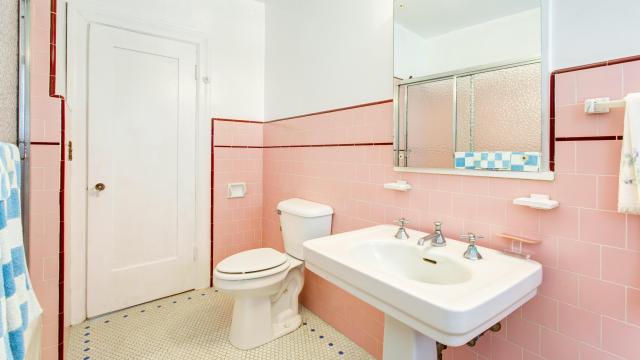Real estate listings sound like they should be pretty straightforward, but if you’re not familiar with the terminology and abbreviations, it can seem like they’re written in a different language. Some things are self-explanatory, like seeing “primary bedroom” and knowing it’s what has been traditionally known as a “master bedroom.”
Bathrooms, however, are another story. Individually, they’re often described using fractions (like a “half bath” or “3/4 bath”). Collectively this is also the case (like saying that a home has “two-and-a-half baths”), but the maths used to reach that number isn’t exactly what we learned in school. Here’s what to know — including the actual differences between a half, 3/4, and full bathroom.
A quick intro to bathrooms and fixtures
The first modern bathrooms — as in, the ones with flushing toilets and indoor plumbing — were first installed in the homes of wealthy Americans in the late 1800s.
For the next few decades, these rooms contained much of what we see in residential bathrooms today — like sinks, toilets, and bathtubs — but depending on the size of the room that was converted into the bathroom, it may have also contained additional fixtures, like a sitz bath, or special tiny sink just for brushing your teeth.
Given space restrictions, these other fixtures weren’t likely to become common in middle- or working-class homes, but they didn’t last very long in most homes of the wealthy, either — leaving us with the current concept of what’s included in a bathroom: A toilet, sink, bathtub, and shower.
Bathroom sizes and fractions, explained
Here’s the difference between half, 3/4, and full bathrooms (plus a few bonuses):
Full bathrooms
In order to be considered “full,” a bathroom needs to have all four of the main fixtures: A toilet, sink, bathtub, and shower. The shower can either be combined with or separate from the bathtub. Occasionally, you’ll see the term “five-piece bathroom,” refer to having a separate bathtub and shower stall.
3/4 bathrooms
Three-quarter bathrooms have three out of the four components mentioned above: So, a toilet, sink, and then either a standalone bathtub or shower — but in most cases, the third fixture is a standing shower. They are often used in finished basements, and as second bathrooms or guest bathrooms, and can be a way to save space in a smaller home (especially if the people living there never take baths).
Half-bathrooms
Half-baths — also known as “powder rooms” — only have a sink and a toilet. They’re usually found on the ground floor of homes, often near a door. Half-baths were originally created to have a place for guests to freshen up or use a toilet without having to go into to the family’s personal space on the second floor.
Quarter-bathrooms
It’s not very common to see a quarter-bathroom in a real estate listing, but if you do come across the term, it’s referring to a room or space with only one of the four main bathroom fixtures. In most cases, it’s a toilet, found either in a tiny room (almost like a stall), or, in some older houses, out in the open somewhere in the basement.
If it’s not a lone toilet, a 1/4 bathroom likely consists of a single shower stall — also most common in the basements of older homes. Rooms with just a sink — like a mudroom, vestibule, or wet bar — are typically referred to using those terms instead of quarter-baths.
Water closets
Unlike in other parts of the world where a water closet (or “WC”) is just another word for bathroom (including public restrooms), in American real estate listings, it refers to a toilet situated inside a larger bathroom (often the primary suite) that is separated from the rest of the fixtures. Basically, you open a door that looks like a linen closet, but instead of towels, there’s a toilet.
This configuration is gaining popularity because it offer more privacy to the toilet-user, allows you to take a bath or shower without having to gaze upon a toilet the entire time, makes it easier for multiple people to use the bathroom at once, and keeps smells/evaporated toilet water (and everything in it) contained in a single small area.
Luxury bathrooms
While there’s no official definition of a “luxury bathroom,” you may also see this term used in real estate listings, along with “deluxe bathroom.” It could be used to indicate that the materials used to construct the bathroom are higher-grade, or it could mean that there are additional fixtures beyond the standard four — like a double-sink vanity, or a bidet. (Or all of the above.)
Because real estate listings don’t always explicitly reveal what makes a bathroom “luxury,” it’s best that you ask about it if there’s a particular feature that’s important to you. That should help avoid situations where you assume you’re getting a dual vanity, but in that case, “luxury” instead refers to the fact that they used slightly-better-than-builder-grade tile.

Leave a Reply
You must be logged in to post a comment.